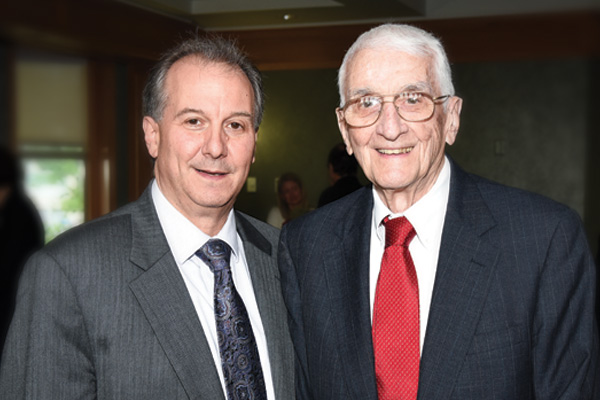From the dean
Every now and then, you get the timing just right.

In this issue of Momentum, you will see the story of McKelvey Engineering launching a new Center for Women’s Health Engineering. When I tell individuals who are not part of an engineering/medical school ecosystem about this new endeavor, I get puzzled looks. How is women’s health an engineering problem? If the person is a parent — especially a woman parent — I mention that as they recall, pregnancy entails a remarkable set of mechanical and materials phenomena. Tissues develop and stretch, absorbing mechanical load. Entire organs form that permit the transmission of certain elements from the mother’s circulatory system to the fetus. And at time of labor, the forces that are produced in a synchronized manner, coupled with the controlled rupture of membranes and the dilation of other structures, result in birth of a child, and yet the mother’s system is left intact so the mother can move from caring for a baby internally to being a mother externally.
Except when it doesn’t.
As reports mentioned in the article attest, maternal mortality in the U.S. is actually increasing — the only developed country for which that is true. Outcomes among women of color are even more disturbing: Black women are three times more likely to die in childbirth than white women. The situation is so extreme that in the summer of 2022, the White House and Congress began developing roadmaps and passing legislation to address these challenges. When you dig into the various possible causes and challenges, one learns quickly that many women’s health issues — and in particular maternal health — is woefully understudied and thus poorly understood.
Enter the Center of Women’s Health Engineering. As you will read, establishing the Center was an outcome of process started in 2020 when several faculty members from both McKelvey Engineering and the School of Medicine began a women’s health initiative. The effort quickly gained momentum (pardon the pun) as other faculty and supporting alumni saw the immediate need and opportunity. The medical school faculty recognize that many of the scientific challenges require an engineering approach not only because of the structural issues involved but also because it is quite challenging (for obvious reasons) to do any experimental work with pregnant women, and thus simulation and modeling was key to much initial understanding. Because of increased awareness of this challenge, there will be significant funding available to support these interdisciplinary lines of research. The timing was perfect. And the Center is a quintessential example of the type of interdisciplinary research that is championed at McKelvey Engineering. As dean, I am thrilled to be able to support such a Center that addresses such a critical societal problem, and I know you will enjoy learning more about it.
Before I close, I want to acknowledge the end of two eras. First, you will read of the passing of Jerome Cox. Jerry was a fundamental force behind the development of computer science at WashU. His impact is seen not only in the work he did but also by the remarkable number of students, now our alumni, whose lives he touched. Second, after years of leadership in biomedical engineering through his work in cardiac arrhythmia, Yoram Rudy is retiring. At a symposium held a few years ago, the academic influence that Yoram has had was clear as speaker after speaker could trace their scientific roots to Yoram’s research and laboratory. McKelvey Engineering research is stronger now than it ever has been, and much of that is because of the type of foundation laid by Jerry and Yoram.
Back to Engineering Momentum